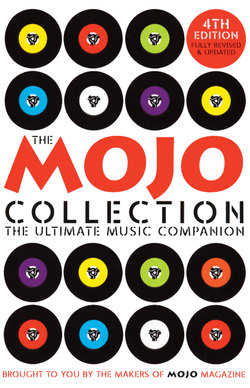Читать книгу The Mojo Collection - Various Mojo Magazine - Страница 114
На сайте Литреса книга снята с продажи.
Love Forever Changes An unclassifiable trove of bittersweet pop.
ОглавлениеRecord label: Elektra
Produced: Arthur Lee and Bruce Botnick
Recorded: Sunset Sound Recorders, Los Angeles; June 9, 10 and 12; August 11–12; September 10 and 25, 1967
Released: February 1968 (UK) November 1967 (US)
Chart peaks: 24 (UK) 154 (US)
Personnel: Arthur Lee (g, v); Bryan Maclean (g, v); John Echols (g); Ken Forssi (b); Michael Stuart (pc); David Angel (ar); Hal Blaine (d); Billy Strange (g); Carol Kaye (b)
Track listing: Alone Again Or (S); A House Is Not A Motel; Andmoreagain (S); The Daily Planet; Old Man; The Red Telephone; Maybe The People Would Be The Times Or Between Clark And Hilldale; Live And Let Live; The Good Humor Man He Sees Everything Like This; Bummer In The Summer; You Set The Scene
Running time: 42.58
Current CD: Warners 8122735372 adds: Hummingbirds (Demo); Wonder People (I Do Wonder) (Outtake); Alone Again Or (Alternate Mix); You Set The Scene (Alternate Mix); Your Mind And We Belong Together (Tracking Sessions Highlights); Your Mind And We Belong Together (Single Version); Laughing Stock (Single Version)
Further listening: Da Capo (1967) for signs of incipient greatness; Love Story (1995) for the bigger picture
Further reading: Love: Forever Changes 33 1/3 (Andrew Hultkrans, 2003)
Download: iTunes
A psychedelic masterpiece with neither lengthy jams nor studio wizardry; folk rock with scant hint of protest or sweet harmonies; Forever Changes is an enigma wrapped in a web of contradictions – which hasn’t harmed its impeccable cult credentials one bit. Starting life as a British Invasion-fixated bunch of Byrds acolytes, Love’s primary weapon was Arthur Lee, a precocious songwriter reared on The Beatles, Beethoven and James Brown. ‘It was my name, my band, my music,’ Lee said, ‘and my music forever changes.’ It did, and rapidly, too. Besides Lee’s dominating presence, Love’s multi-racial mix juxtaposed Latin flavours with Lee’s quirky R&B and Maclean’s gentle folk-pop.
After releasing two albums (Love and Da Capo) in quick succession, the band retreated to Bela Lugosi’s old mansion in the Hollywood hills, known as ‘The Castle’. While they virtually fell apart, the acrimony magnified by paranoia-inducing quantities of heroin and acid, Love’s Elektra rivals The Doors were succeeding fast. ‘The way I wrote music then was according to my lifestyle and environment,’ Lee later recalled. That certainly helps explain the disturbed, claustrophobic feel which undermines the album’s deceptively blissful demeanour.
It was recorded in just seven sessions, over a period of four months. Neil Young produced the first day’s work (The Daily Planet, Andmoreagain), with Phil Spector’s ‘Wrecking Crew’ (Hal Blaine, Billy Strange and Carol Kaye) providing backing. After some tearful complaints, Young and the session players were banished and the band reclaimed the songs the following day by overdubbing new parts. David Angel’s elegant string arrangements, so vital to the album’s dreamlike charm, were added late in September at the end of the recordings. After Lee and Maclean grudgingly approved them, the results were mixed in a gruelling 17-hour session: ‘No coffee, a few cigarettes and a lot of cocaine’, recalled Ken Forssi. Out of chaos came, according to Elektra at the time, ‘a vast study in moods’. Maclean’s Old Man and Alone Again Or were almost unbearably plaintive, but it was the nagging expressions of a seething irascibility (the contradictory voices on The Red Telephone, the spontaneous guitar duels on A House Is Not A Motel and Live And Let Live, Lee’s alienated visions and sardonic delivery) that fortified the album’s eggshell melodies with tough, impervious centres.
